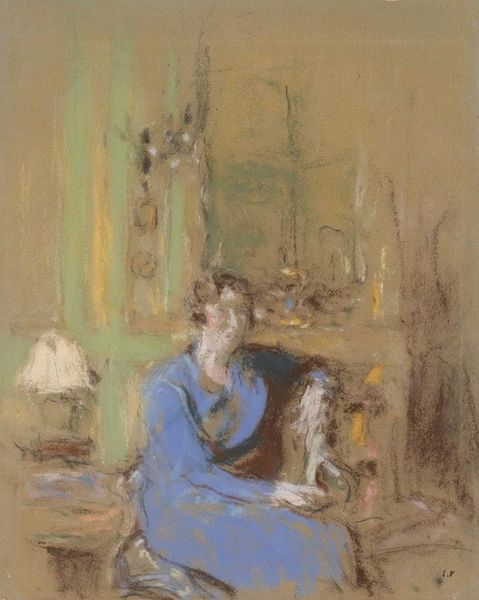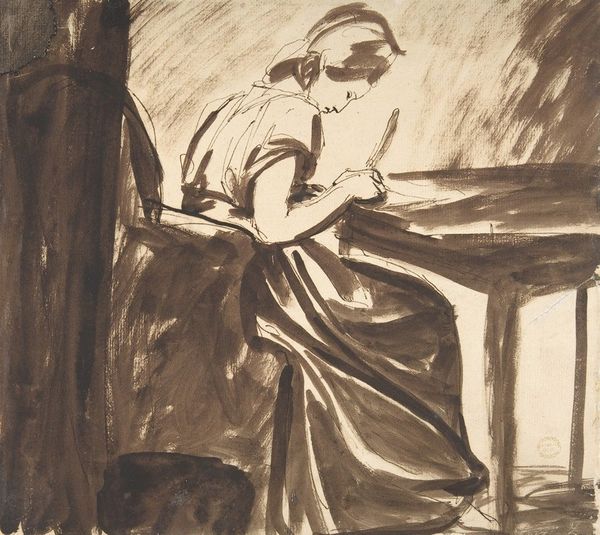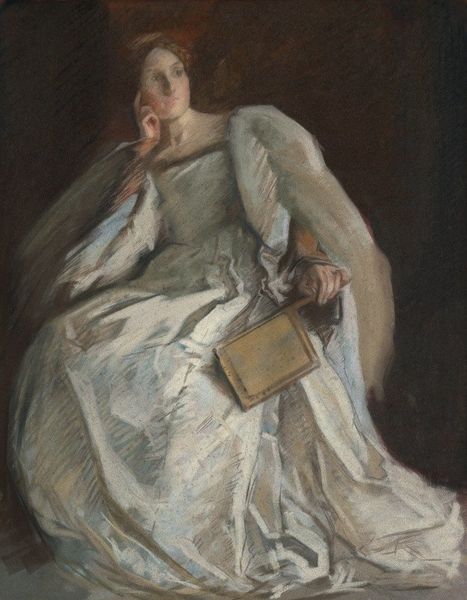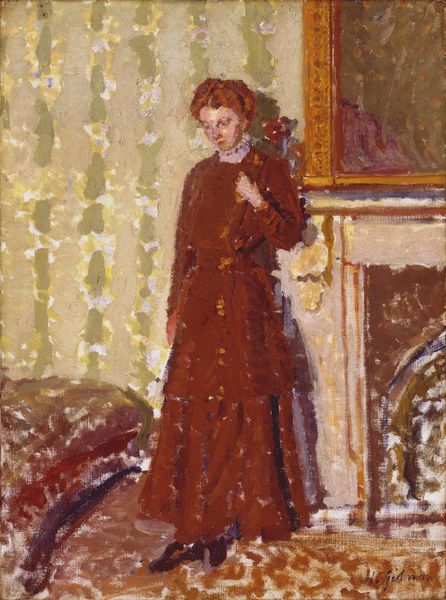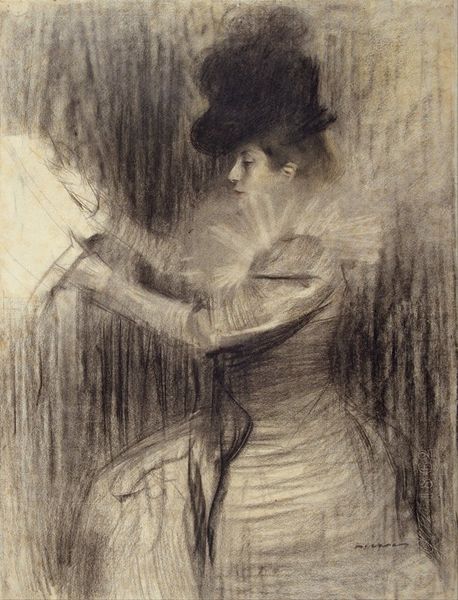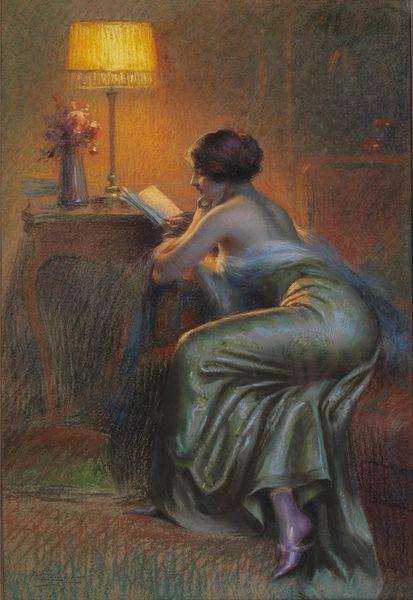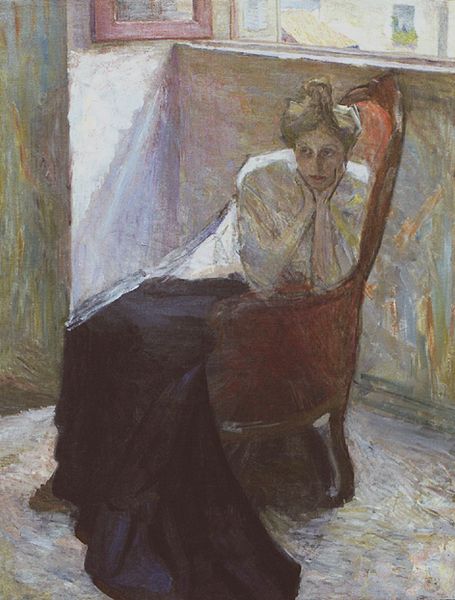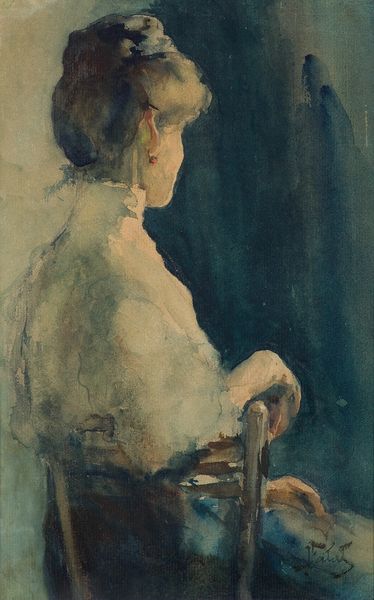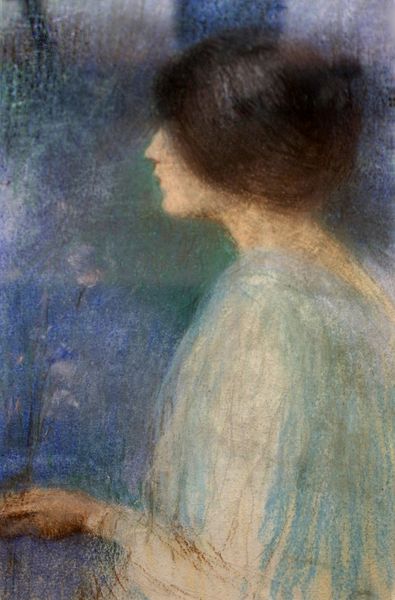
Dimensions: support: 273 x 210 mm frame: 460 x 391 x 45 mm
Copyright: CC-BY-NC-ND 4.0 DEED, Photo: Tate
Editor: So, this is Philip Wilson Steer's "Girl in a Blue Dress," currently at the Tate. The color palette feels muted and the subject's inward focus creates a contemplative mood. What stands out to you in this piece? Curator: I see a portrait that whispers of the limitations placed upon women during Steer’s time. The girl's downcast gaze and the domestic setting hints at the restricted roles often assigned to them, defined by interiority and constrained agency. How does her dress, specifically, speak to these societal constraints, do you think? Editor: It almost feels like the dress, with its polka dots, is an attempt at individuality within those confines. Curator: Precisely! The splash of individuality, juxtaposed with the subdued setting, creates a subtle commentary. The painting asks us to consider: how much freedom did women truly possess to define their own identities? Editor: That’s a powerful reading. I hadn't considered the tension between confinement and self-expression. Curator: Art allows us to see beyond the surface and recognize the social forces shaping the lives of those depicted.
Comments
tate 6 months ago
⋮
http://www.tate.org.uk/art/artworks/steer-girl-in-a-blue-dress-n05295
Join the conversation
Join millions of artists and users on Artera today and experience the ultimate creative platform.
tate 6 months ago
⋮
Steer often painted children, showing them either in domestic interiors or playing outdoors on the beach at Walberswick in Suffolk. This girl admiring the pages of a picture book is Rose Pettigrew, who modelled for Steer for eight years. She wrote: ‘I love posing for Philip; and first of all posed for little money as I thought he was very poor, and child as I was, wanted to help him’. Her vulnerable position as a young girl, however, is borne out by hard wooden chair she sits on and her sparse surroundings. Gallery label, July 2004

